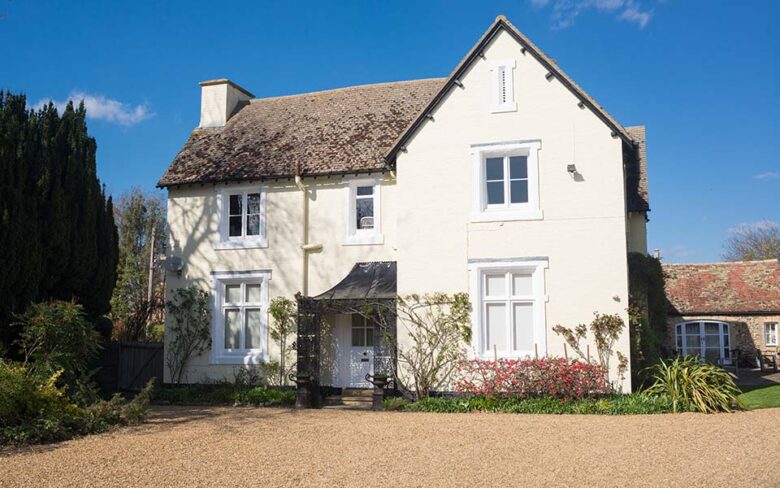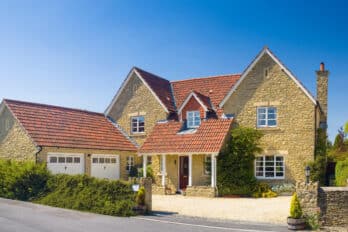
What Survey do I Need for a Detached Home?
Offering space, privacy and peace, for many people, owning a detached home is the dream. But, as with other properties, there is always the potential for there to be hidden issues, unexpected work and costly ongoing maintenance. Getting the proper survey so that you’re clear on the cost implications of buying and running a detached home is therefore essential.
What Types of Surveys Are There?
For a detached home, there are two main options when it comes to a survey – a RICS HomeBuyer Report or a building survey. Of the two, a building survey will almost always be the best option.
While a HomeBuyer Report may be sufficient for a modern detached house built after 1990 that appears to be in a good state of repair, it’s worth remembering that even the most stunning-looking homes can hide defects. When making such a large investment, it can be wise to have a thorough inspection of the property before committing.
This being the case, a building survey is often the best choice when buying a detached home. This more comprehensive survey will ensure a thorough understanding of the property’s condition, inside and out, including those more difficult and hard-to-reach areas such as roofs, outbuildings and services such as drainage and water.
However, a building survey won’t just tell you what state the property is in now; it’ll also highlight any future maintenance issues you may need to know about, particularly any costly matters you need to be aware of before a sale is agreed. This means that not only can you be confident you’re buying a home that meets your needs now, but you can also be sure you can afford to run and maintain it in the longer term.
In addition, with a building survey, you’ll receive a clear, accurate survey report highlighting any finds, including photographic evidence. This will also include a detailed inspection of as much of the property as is physically accessible, including lofts, cellars, under-floor coverings and behind furniture.
The property will be assessed for insulation, condensation and damp; energy efficiency and environmental issues will be highlighted; and structural integrity, property build and construction materials will be examined in detail. Any repairs that have already been made or works that have been carried out will also be highlighted.
In short, with a building survey, you can be sure you know the property inside out so you can avoid any nasty surprises as you settle into your new home.
Of course, if the home is a new build, a building survey will be overkill, so in this case, we’d recommend a Snagging List and HomeBuyer Report to make sure all issues, big and small, are rectified before you move in. It may be surprising to hear that many newbuilds are not delivered in perfect condition and commonly have niggles such as decorative defects, kitchen and bathroom issues, and poorly fitting joinery that can be difficult to get the developer to fix once you’ve moved in. A Snagging List will highlight these with photographic evidence, helping you to encourage the developer to rectify them before you complete them.
What Affects the Cost of a House Survey?
Surveys can vary in price, based mainly on which survey you get, the size and value of the property, where you live and the surveyor you use. So, a HomeBuyer Report will cost you less than a building survey, but you’ll get a much less comprehensive report and insight into the property.
Many surveyors also charge based on the home’s value, so the more you spend on the property, the more you’re likely to spend on the survey. As geographic location also affects costs, areas such as London and the South-East are likely to be the most expensive for surveying services.
The size and condition of the property can also have an impact. Surveyors will need to spend more time investigating larger homes and those in a poor state of repair, and the reports they produce will be more extensive, so their costs will reflect this.
Depending on these factors, prices could range from a few hundred pounds to well over a thousand.
It’s also worth bearing in mind that if significant issues are discovered, you may have to factor in additional investigations such as roof surveys, structural engineers and damp specialists.
Novello’s Private Client Surveying Service
While a building survey will be essential when buying most detached homes, this will only give you some of the information you need to be sure the house is for you. This is where Private Client Surveying from Novello comes in. With this service, not only do you get a comprehensive, clear and accurate building survey carried out by an experienced RICS qualified surveyor, you also get a whole host of additional information, guidance and support that other surveyors simply don’t offer.
This starts with an onboarding call where you can ask questions or share specific concerns and move on to the building survey itself and beyond. In addition to all the usual information included in a building survey, we also provide:
- Floor area measurements.
- Building insurance cost assessment.
- Major works costing estimates.
- And an optional reflective market valuation.
If the property requires further investigation, we can help you to obtain quotes and guide you through what can be a confusing process. We’ll advise on renegotiation strategies so you get true value from your survey results.
With Private Client Surveying, we take the stress and confusion out of buying a house, keeping key parties informed throughout the process and guaranteeing a bespoke, professional and unbeatably detailed service.
To find out more about Private Client Surveying, contact us or arrange a free consultation now.

